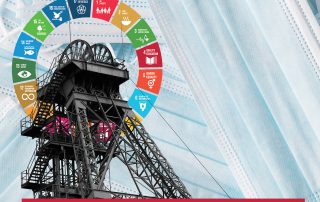CIBJO releases Gemmological Special Report, discusses determining criteria for gem variety names
OCTOBER 20, 2021
With fewer than two weeks to go to the opening of the 2021 CIBJO Congress on November 1, 2021, the sixth of this year’s CIBJO Special Reports has been released. Prepared by CIBJO’s Gemmological Commission, headed by Hanco Zwaan, the report focuses on two issues, namely the establishment of criteria for defining gem variety names, and the creation of an international set of standards, practices and nomenclature for the mainly jade and jadeite gem materials referred to as Fei Cui.
As Mr. Zwaan reports, a new Committee on Varietal Names was established after the last CIBJO Congress, which took place in Bahrain in 2019, under the auspices of the Gemmological Commission Steering Committee. It has already produced a preliminary draft of a document listing gem materials and definitions, which will be presented and discussed during the Gemmological Commission’s online session on November 3, as part of the upcoming CIBJO Congress.
Fei Cui, which is a trade name predominantly used in Asian countries, is associated with the minerals jadeite, omphacite and kosmochlor, and represents a jewellery category that has an annual global net worth second only to diamonds. In its respect, CIBJO has set up a working group that is charged with creating universally accepted standards, practices and nomenclature, building upon the body of work already carried out by the Gemmological Association of Hong Kong (GAHK), the National Gem Testing Centre of Beijing and others.
“CIBJO is interested in sending a signal that it is also keen to address issues that are mainly relevant in non-Western countries,” Mr. Zwaan writes.
CIBJO congresses serve as the official gathering place for the World Jewellery Confederation’s global membership, and are also the venue for the annual meetings of CIBJO’s sectoral commissions, where amendments can be introduced to the organisation’s definitive directories of international industry standards for diamonds, coloured stones, pearls, gem labs, precious metals, coral and responsible sourcing, known as the Blue Books.
The CIBJO Congress is also where the programme of World Jewellery Confederation Education Foundation (WJCEF), relating to responsible and sustainable activities in the industry and CIBJO’s ongoing cooperation with the United Nations and its development programme is reported upon.
To download a full copy of the CIBJO Gemmological Commission’s special report, PLEASE CLICK HERE.







